Beyond Araxes: The Hidden World of Persian Armenia
Karo Sahakyan / PAN Photo Agency
More than 200 Armenian churches and monasteries are known to be situated on the territory of Iran, some of which were built in the once Armenian-populated provinces of historic Armenia, while others were erected on Iran's territory by the powerful medieval Armenian community.The churches of New Julfa (Isfahan) and Tehran, as well as the Monastery of Saint Thaddeus and a number of other monuments boast specific architectural peculiarities and unique interior. Several remarkable Armenian structures (St. Thaddeus Monastery, Monastery of St. Stephen the Protomartyr, Church Tsortsor, Shepherd Church) in Iran’s north - on the right bank of River Araks which once hosted Armenian-populated provinces - were in 2008 listed among UNESCO World Heritage Sites, and were later renovated and restored by the government of the Islamic Republic. With support from the Eastern Diocese of the Armenian Church of America, PAN Photo has toured Iran and photographed some of the Armenian churches and their elements.
More than 200 Armenian churches and monasteries are known to be situated on the territory of Iran, some of which were built in the once Armenian-populated provinces of historic Armenia, while others were erected on Iran's territory by the powerful medieval Armenian community.The churches of New Julfa (Isfahan) and Tehran, as well as the Monastery of Saint Thaddeus and a number of other monuments boast specific architectural peculiarities and unique interior. Several remarkable Armenian structures (St. Thaddeus Monastery, Monastery of St. Stephen the Protomartyr, Church Tsortsor, Shepherd Church) in Iran’s north - on the right bank of River Araks which once hosted Armenian-populated provinces - were in 2008 listed among UNESCO World Heritage Sites, and were later renovated and restored by the government of the Islamic Republic. With support from the Eastern Diocese of the Armenian Church of America, PAN Photo has toured Iran and photographed some of the Armenian churches and their elements.
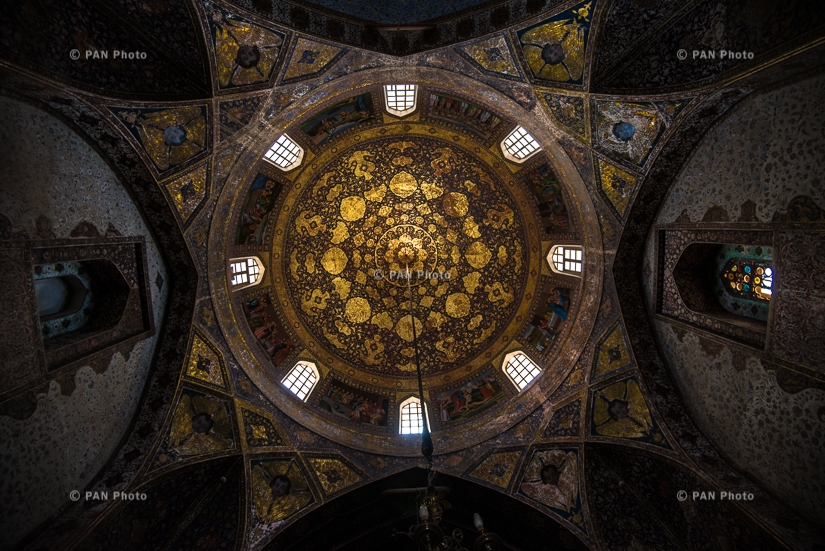
Dome of the Bethlehem church (Bedkhem Church), New Julfa, Isfahan, 1628. The church is known for as many as 70 exquisite frescoes and geometric and floral ornaments, authored by famous 17th century artists Minas and Astvatsatur (the latter is most probab
© PAN Photo / Karo Sahakyan
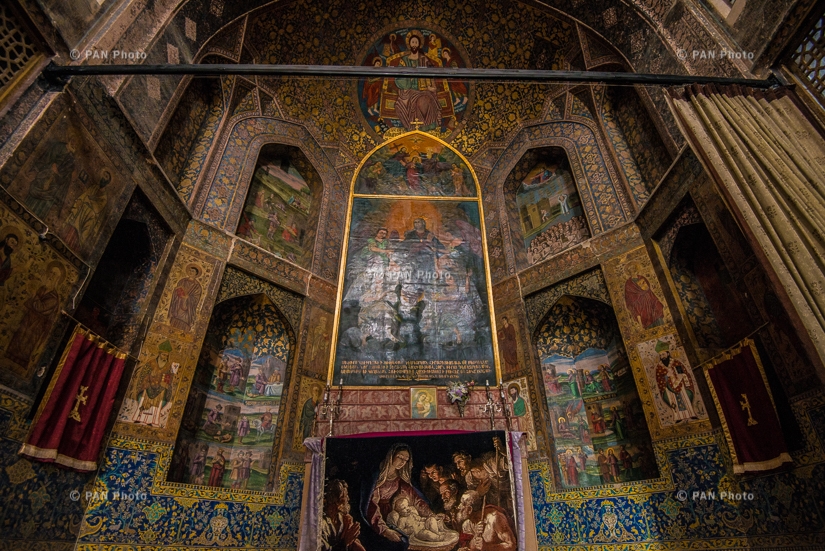
Frescoes of the Bethlehem church, New Julfa, Isfahan, 1628.
© PAN Photo / Karo Sahakyan
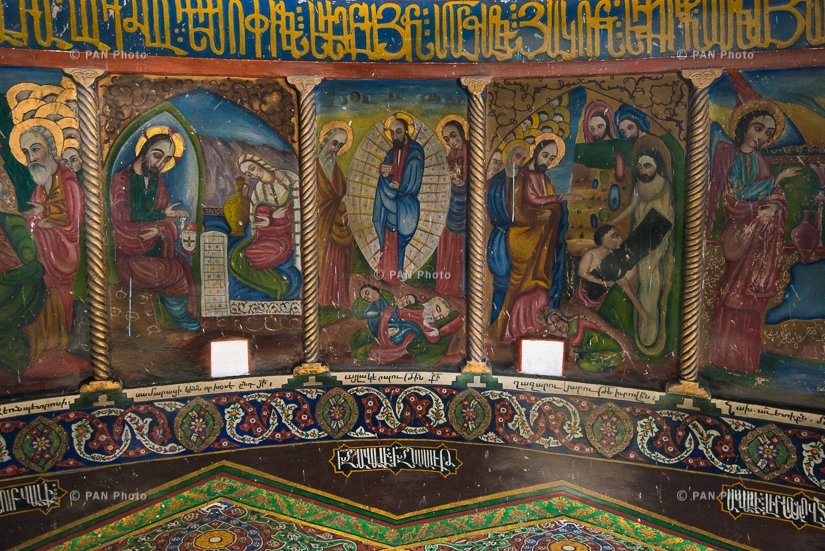
A fresco fragment, St. Mary Church, New Julfa, Isfahan, 1613, Illustrations - 1666
© PAN Photo / Karo Sahakyan
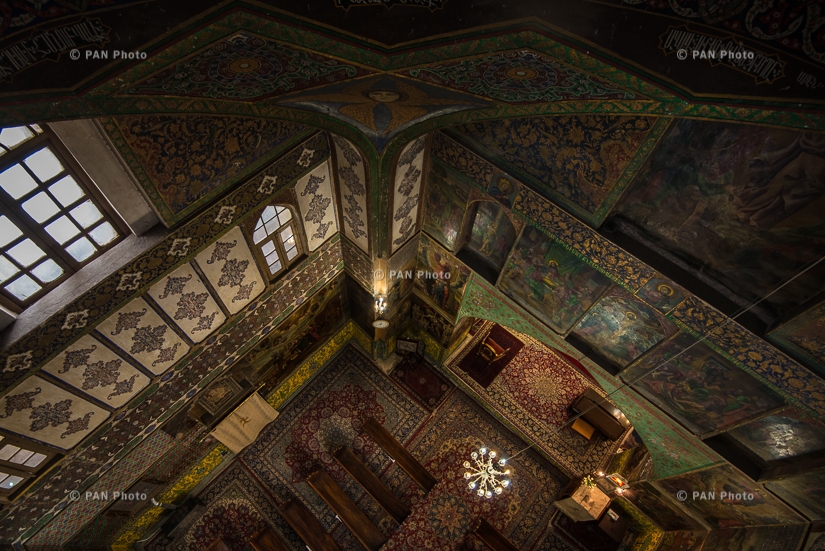
St. Mary Church, New Julfa, Isfahan, 1613, Illustrations - 1666
© PAN Photo / Karo Sahakyan
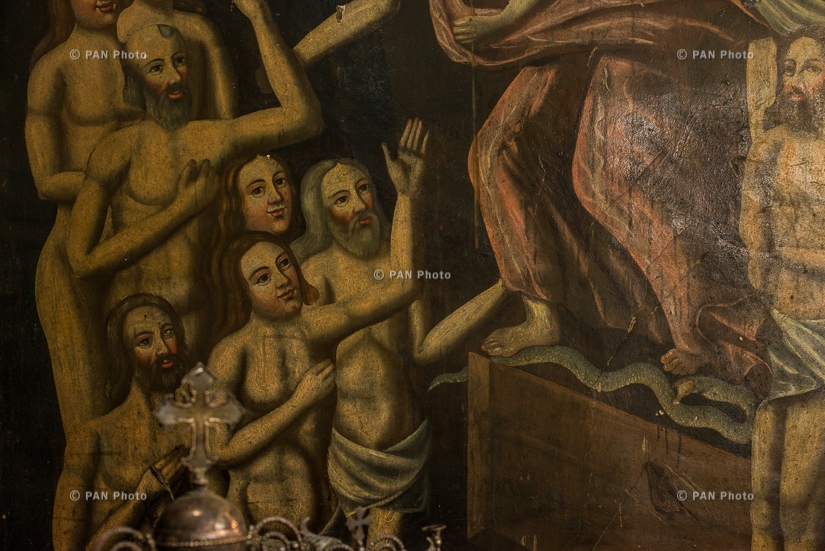
A fresco fragment, St. Mary Church, New Julfa, Isfahan, 1613, Illustrations - 1666
© PAN Photo / Karo Sahakyan
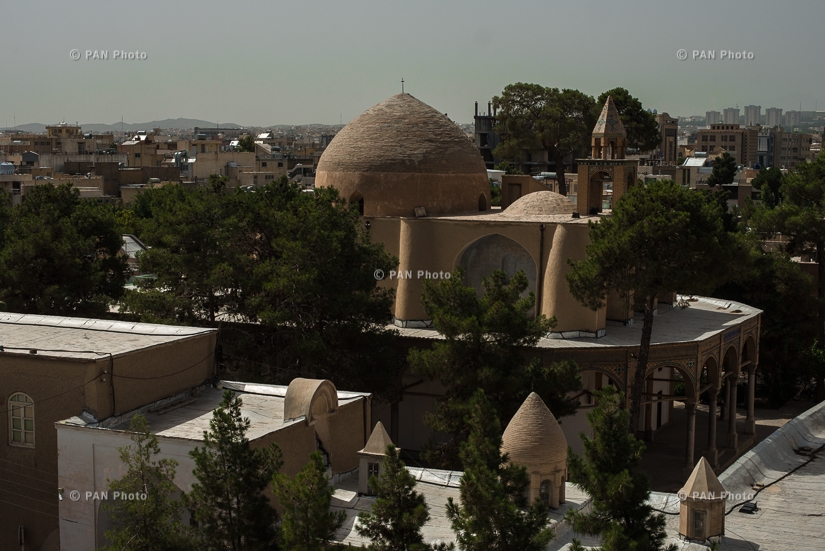
St. Mary Church, New Julfa, Isfahan, 1613, Illustrations - 1666
© PAN Photo / Karo Sahakyan
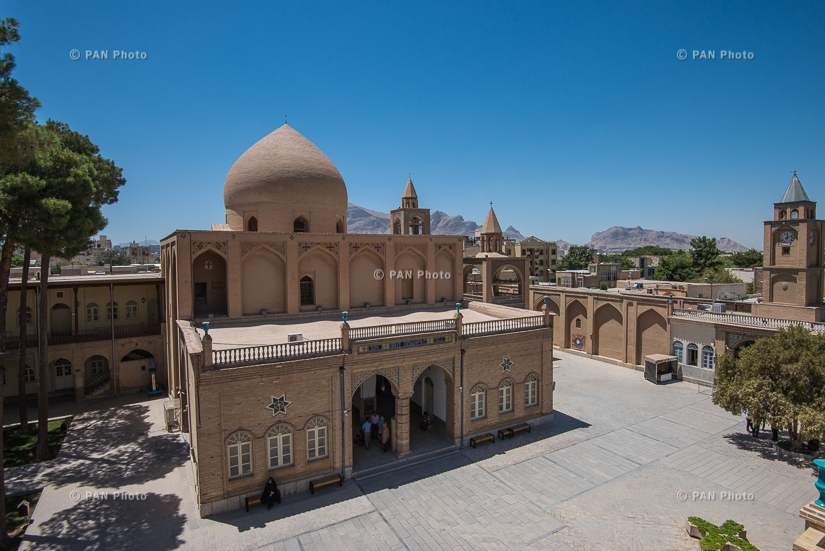
The Surp Amenaprkich Cathedral (the Holy Savior Cathedral), was founded in 1606 and named after the homonymous church in Old Jugha. In 1655-1664, the double-domed Cathedral of St Hovsep Haremtatsi was built on the site of the old church. In 1636, abbot an
© PAN Photo / Karo Sahakyan

Tombstone, St Hovsep church, Isfahan
© PAN Photo / Karo Sahakyan
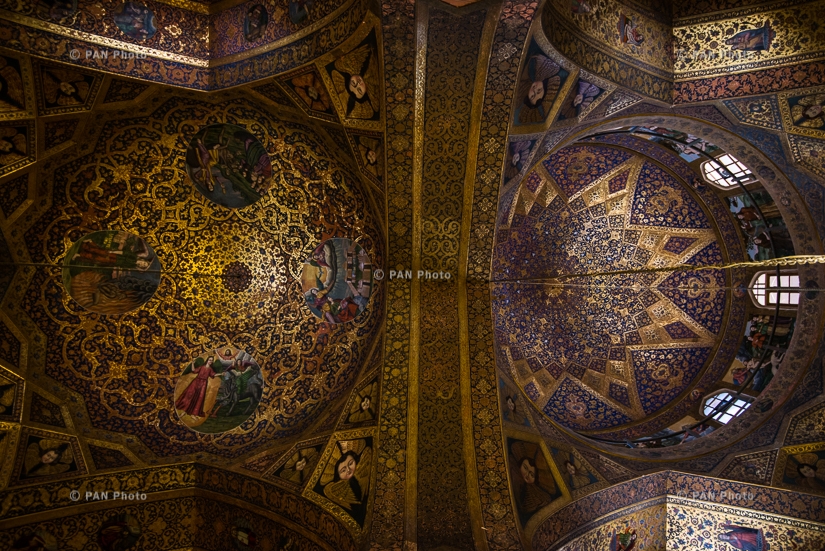
The dome of St Hovsep church of Surp Amenaprkich Cathedral. In 17-18th centuries, the church was decorated with frescoes, floral ornaments, while the lower section was also adorned with colored tiles, influenced by Islamic art.
© PAN Photo / Karo Sahakyan
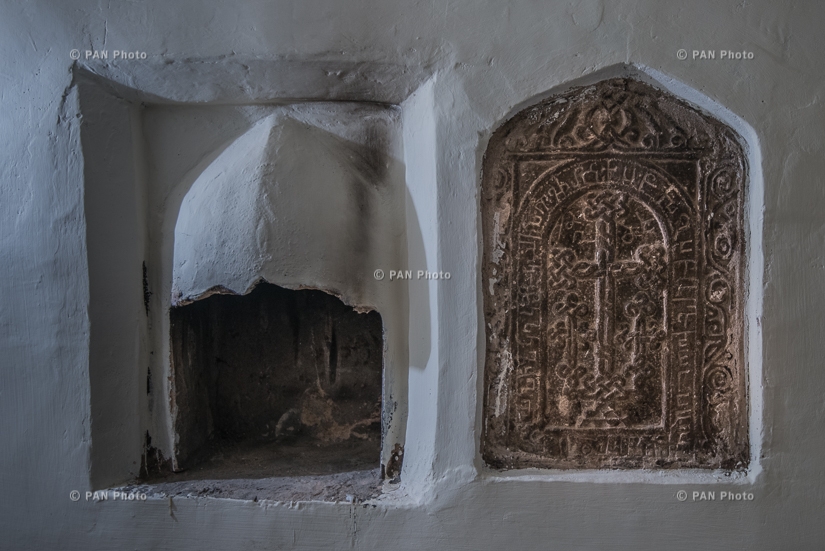
Inside the tabernacle of St Hovsep church, Isfahan
© PAN Photo / Karo Sahakyan
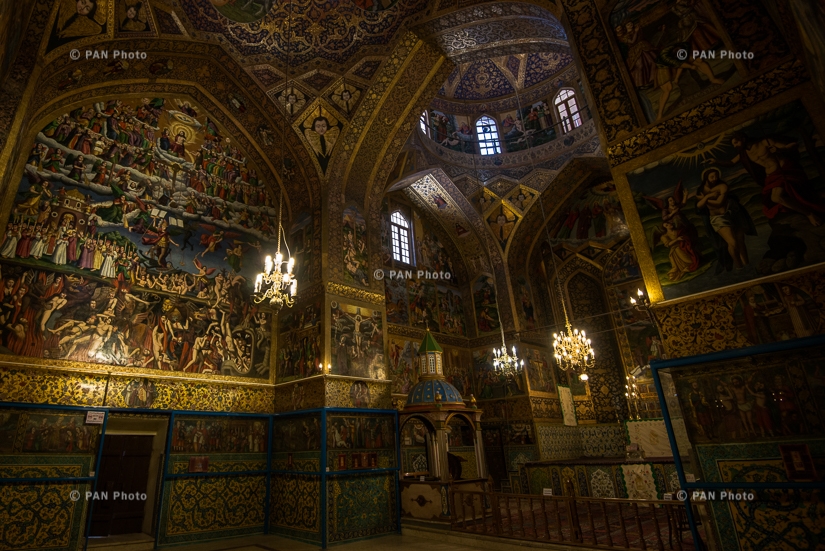
St Hovsep church, Surp Amenaprkich Cathedral. The unique style of the frescoes is a successful combination of principles of Armenian traditional miniature art, classical European painting and Islamic Persian decorative arts.
© PAN Photo / Karo Sahakyan
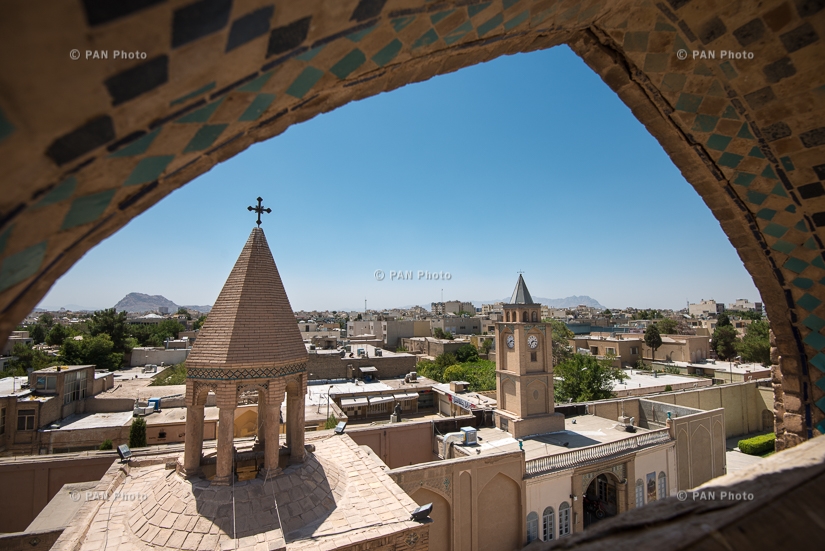
Surp Amenaprkich Cathedral, founded in 1606
© PAN Photo / Karo Sahakyan
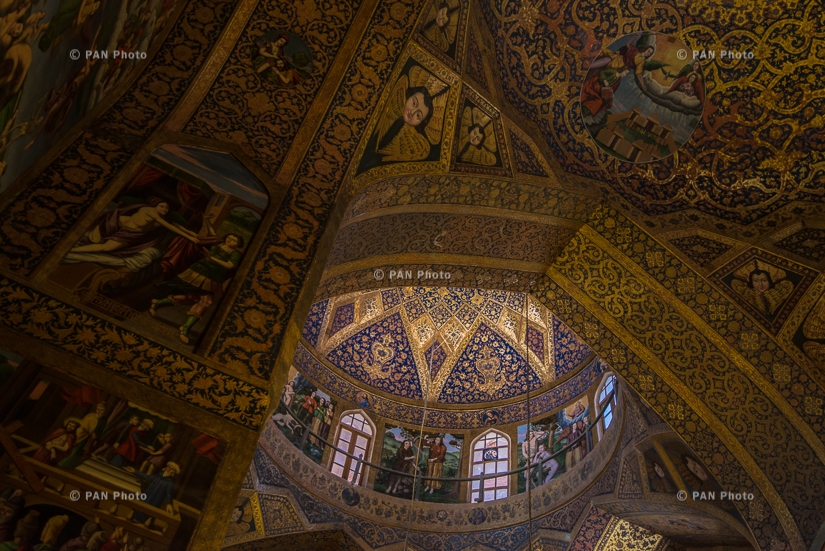
St Hovsep church, Surp Amenaprkich Cathedral. Biblical frescoes, as well as those depicting the activity of Gregory the Illuminator were created by 18th century artists Minas, Hovhannes Mrkuz Jughayetsi, Father Stepanos and others
© PAN Photo / Karo Sahakyan
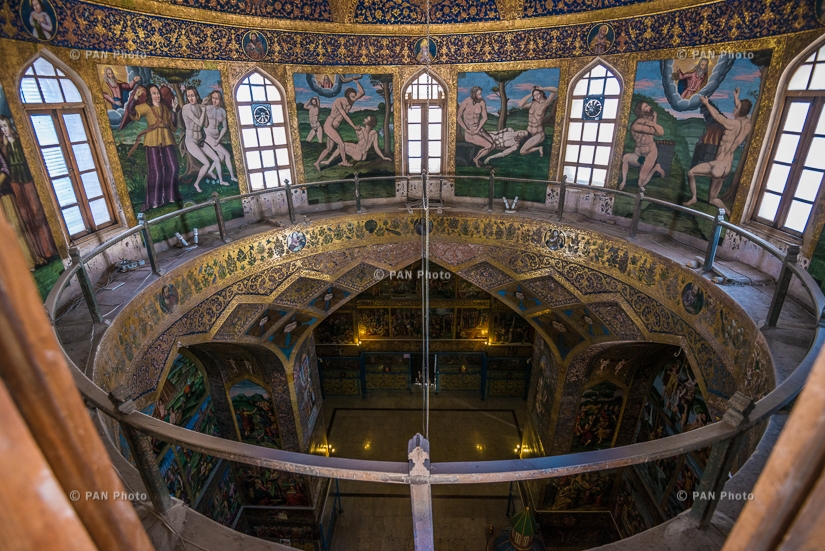
The dome of St Hovsep church, series of paintings “The Expulsion from Paradise,” Surp Amenaprkich Cathedral
© PAN Photo / Karo Sahakyan

Segment of the fresco “The Last Judgement”(1669), St Hovsep church, Surp Amenaprkich Cathedral
© PAN Photo / Karo Sahakyan
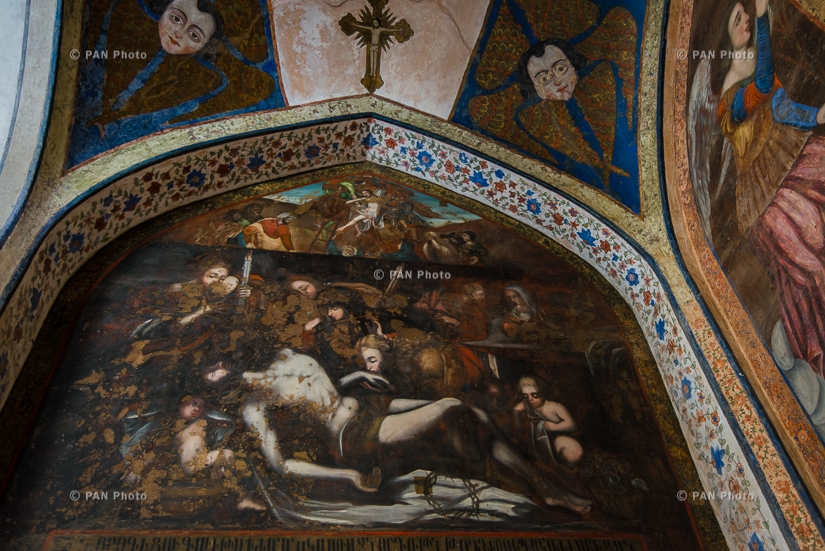
Fresco, St Hovsep church, Surp Amenaprkich Cathedral
© PAN Photo / Karo Sahakyan
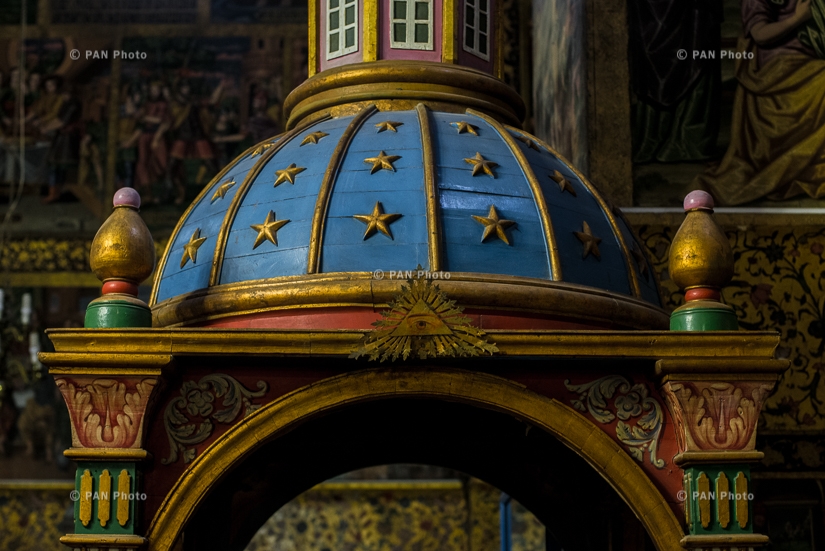
St Hovsep church, Surp Amenaprkich Cathedral
© PAN Photo / Karo Sahakyan
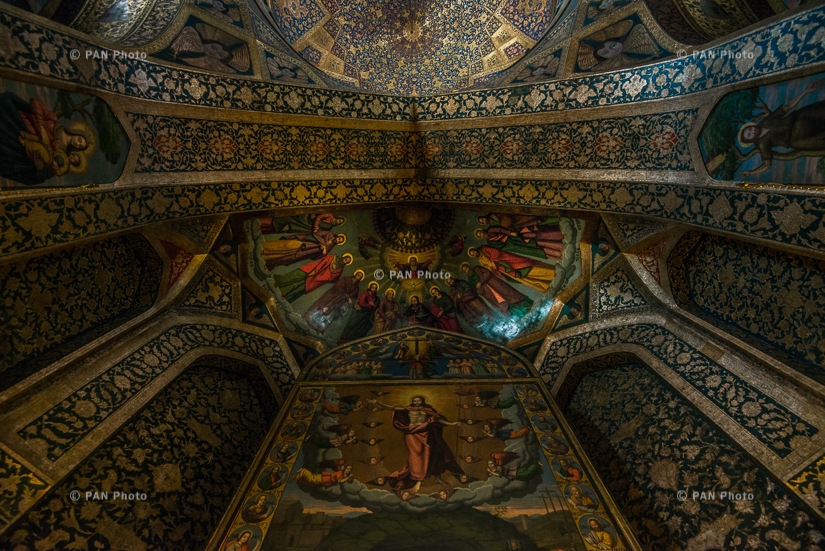
St Hovsep church, Surp Amenaprkich Cathedral
© PAN Photo / Karo Sahakyan
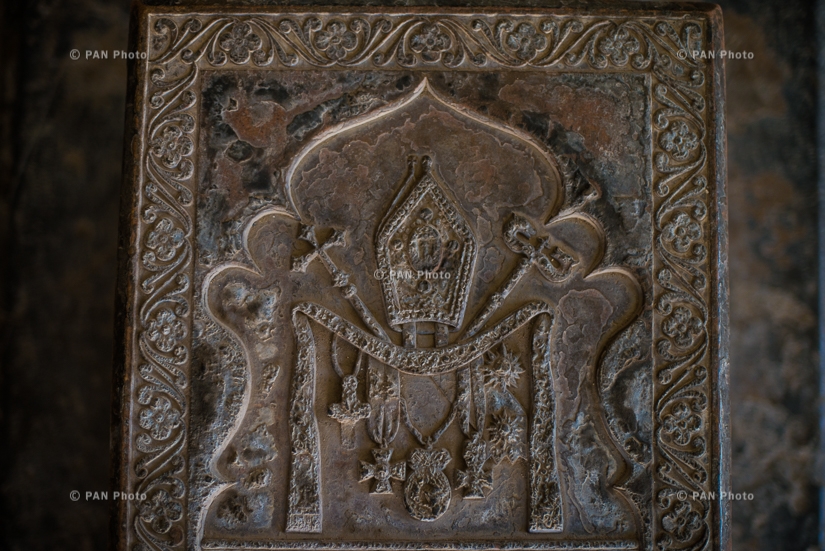
Tombstone, Surp Amenaprkich Cathedral
© PAN Photo / Karo Sahakyan
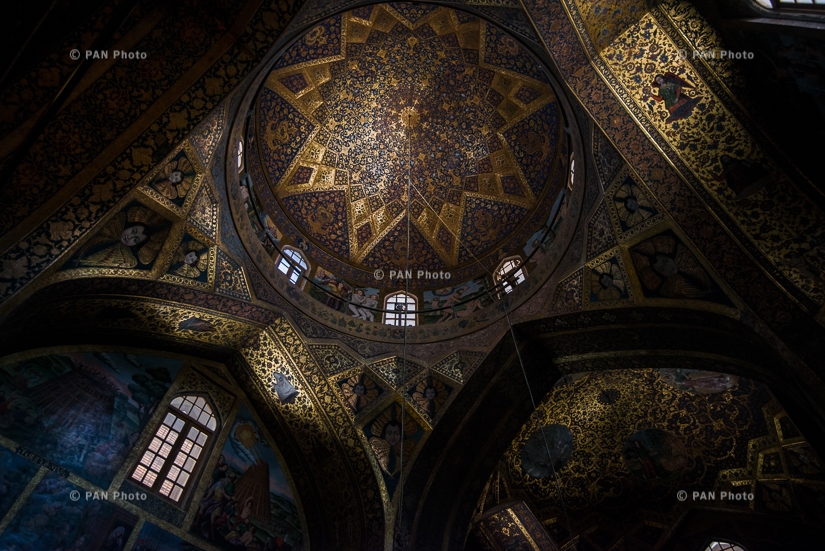
The dome of St Hovsep church, Surp Amenaprkich Cathedral
© PAN Photo / Karo Sahakyan
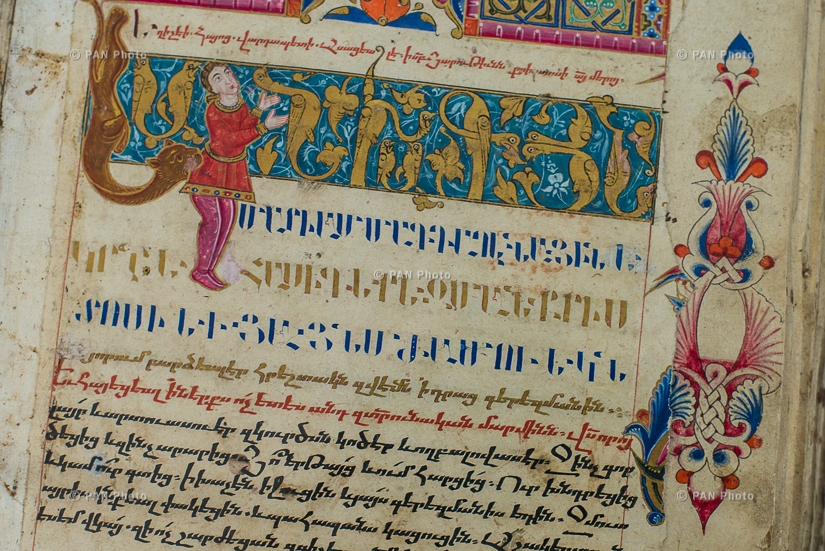
A manuscript kept in the depository of Surp Amenaprkich Cathedral
© PAN Photo / Karo Sahakyan
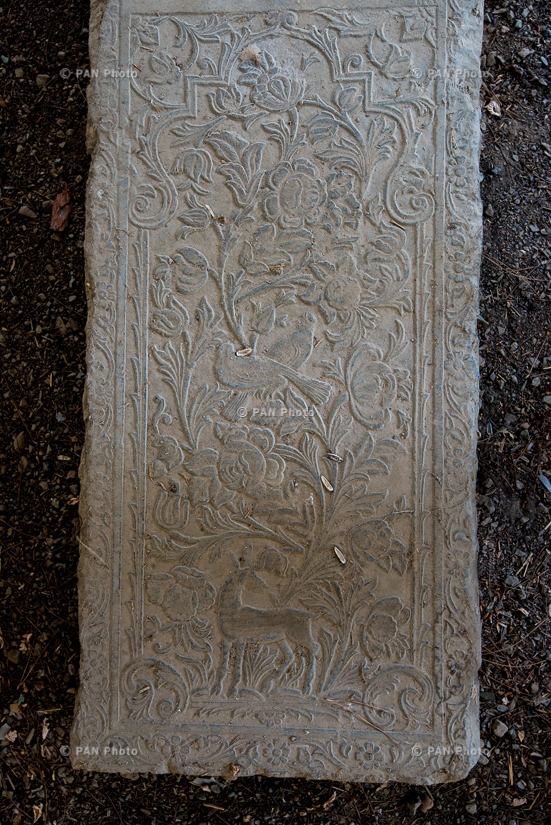
Tombstone, Armenian cemetery of New Julfa
© PAN Photo / Karo Sahakyan
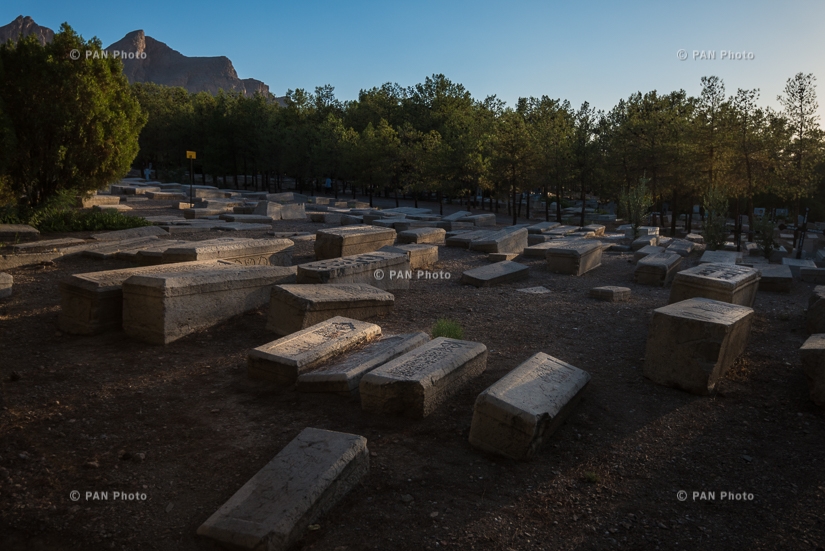
Tombstones, Armenian cemetery of New Julfa
© PAN Photo / Karo Sahakyan
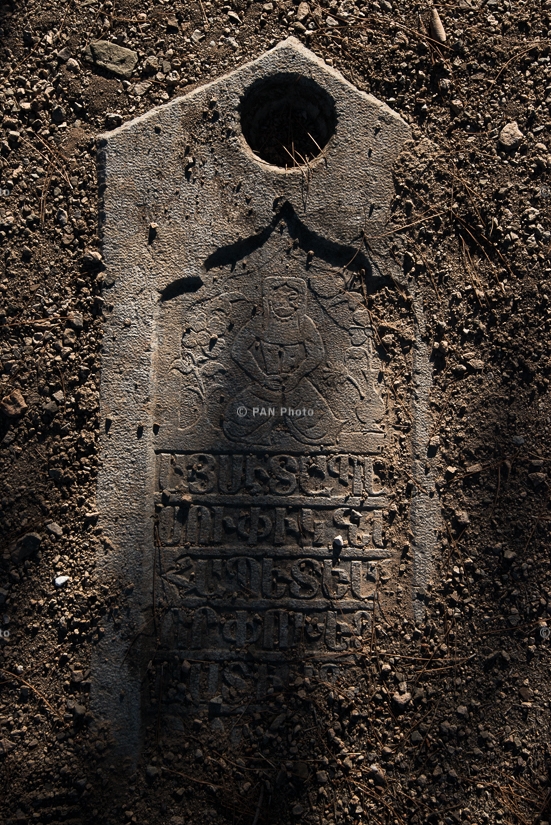
Tombstone, Armenian cemetery of New Julfa
© PAN Photo / Karo Sahakyan

The altar of Surp Asdvadzadzin church, 1662, Shiraz. Harutyun Shmavonyan, founder and editor of the first Armenian journal "Azdarar" (1794-1796) served as a priest at the church in Shiraz.
© PAN Photo / Karo Sahakyan
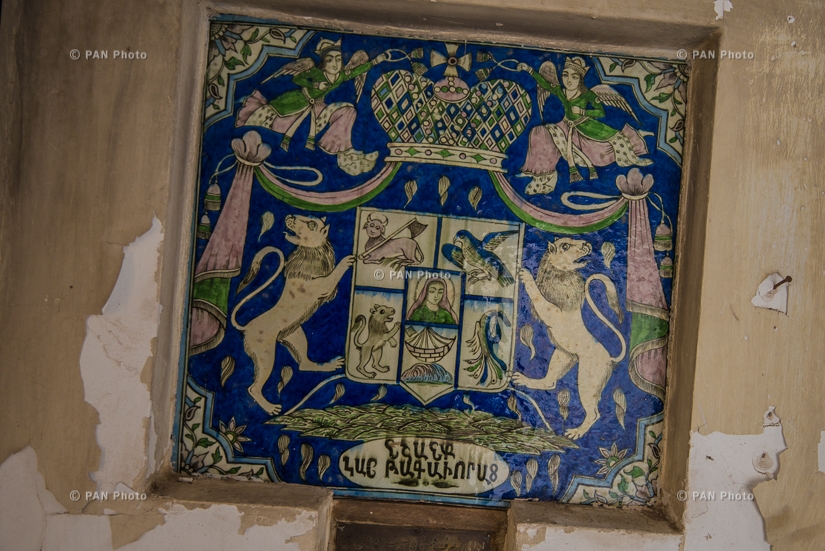
“Emblems of Armenian Kings” - symbolic emblem representing the future of Armenian statehood, 19th century, Surp Asdvadzadzin church of Shiraz
© PAN Photo / Karo Sahakyan
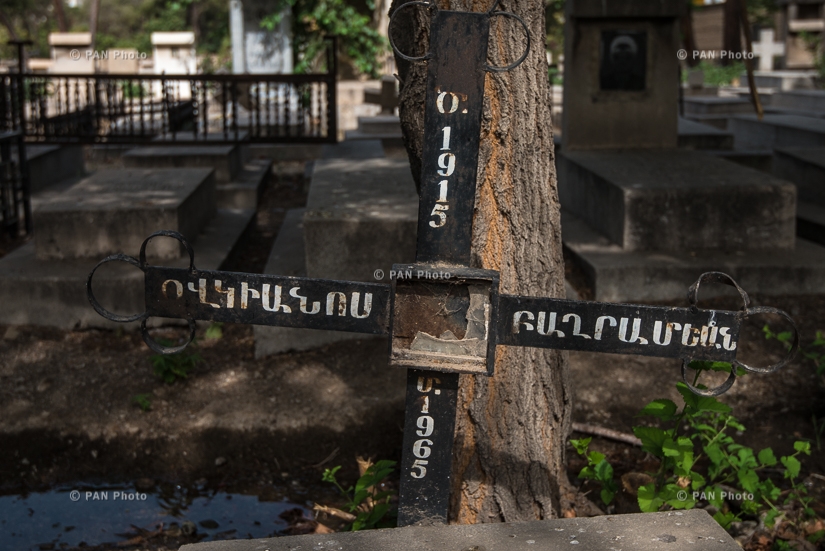
Armenian cemetery of Tehran
© PAN Photo / Karo Sahakyan
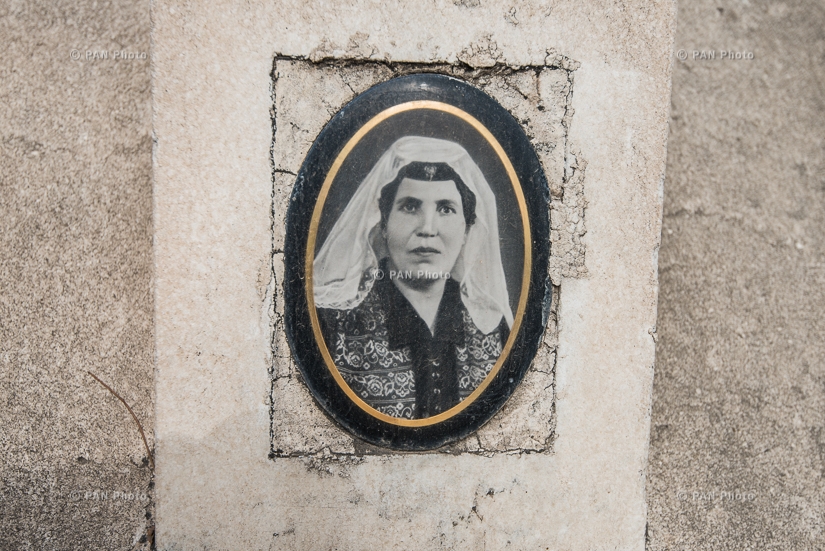
Armenian cemetery of Tehran
© PAN Photo / Karo Sahakyan
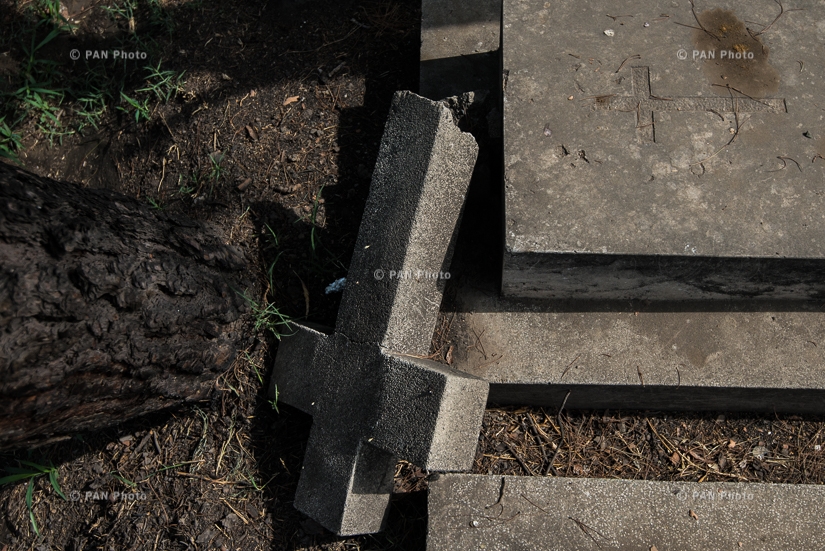
A damaged tombstone, Armenian cemetery of Tehran
© PAN Photo / Karo Sahakyan
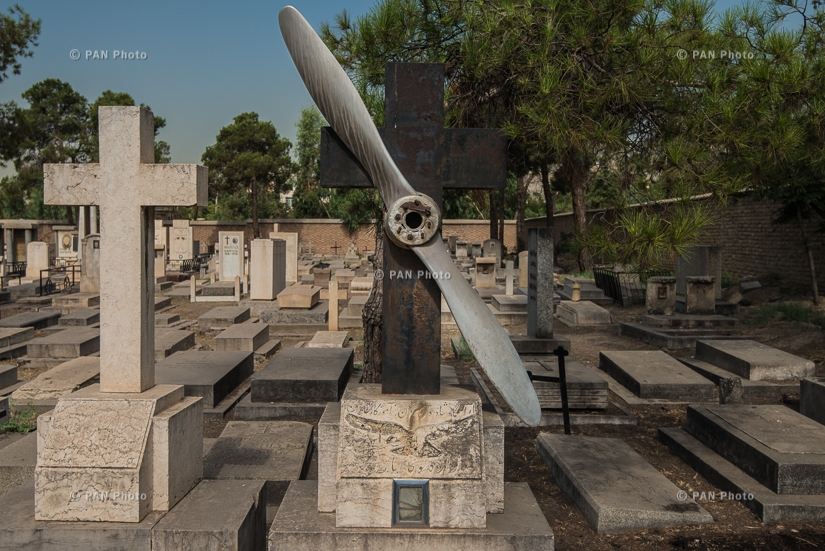
Armenian cemetery of Tehran
© PAN Photo / Karo Sahakyan
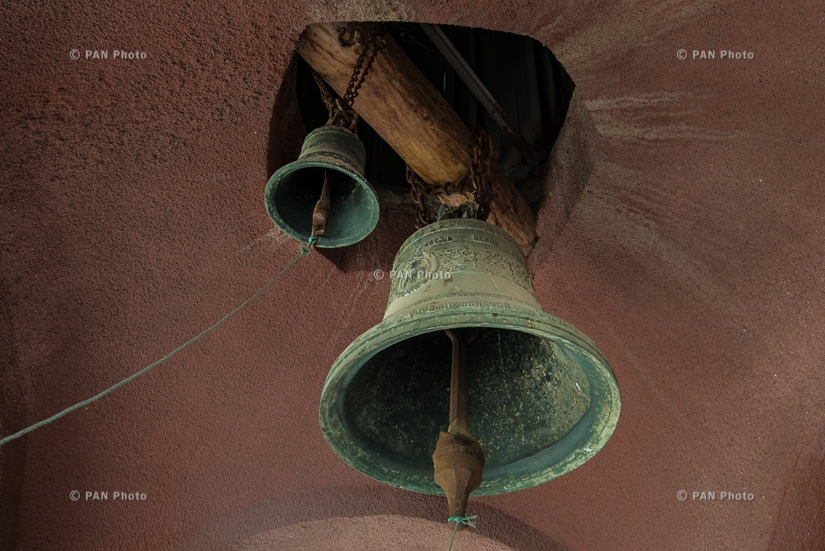
Surp Sarkis Church, Khoy, 1120
© PAN Photo / Karo Sahakyan
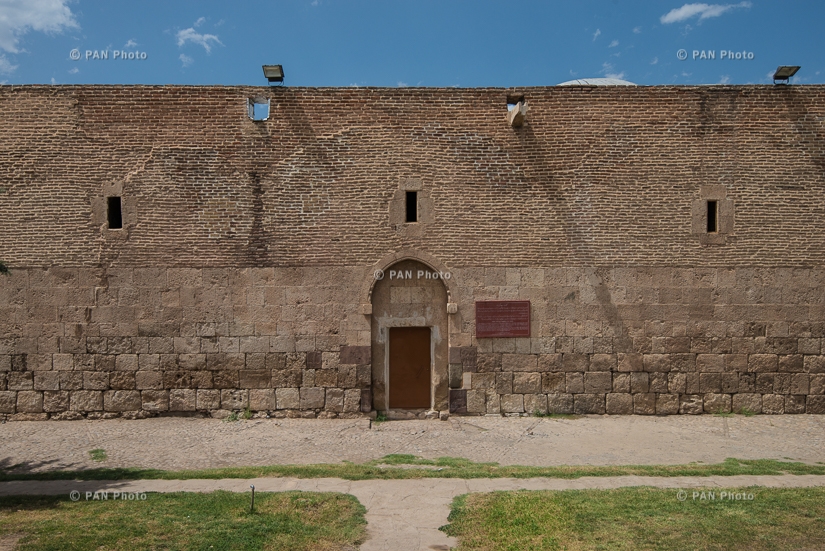
Surp Sarkis Church, Khoy, 1120
© PAN Photo / Karo Sahakyan
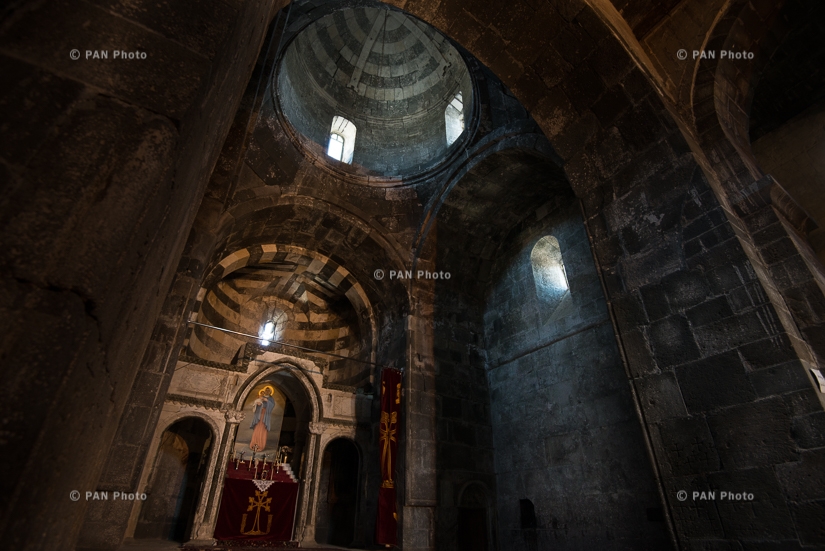
Monastery of Saint Thaddeus, 7th century, rebuilt in 1814, Northern Iran (historic province of Artaz, Vaspurakan)
© PAN Photo / Karo Sahakyan
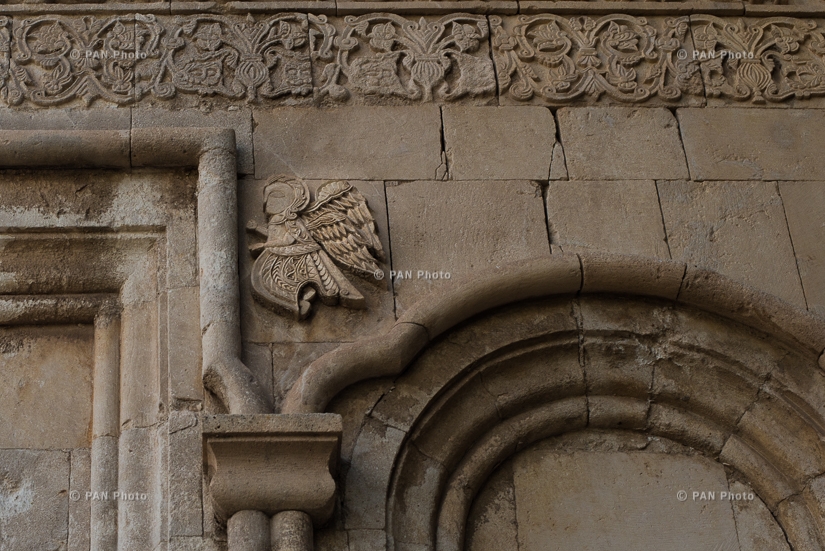
High relief, Monastery of Saint Thaddeus, 7th century, rebuilt in 1814, Northern Iran (historic province of Artaz, Vaspurakan)
© PAN Photo / Karo Sahakyan
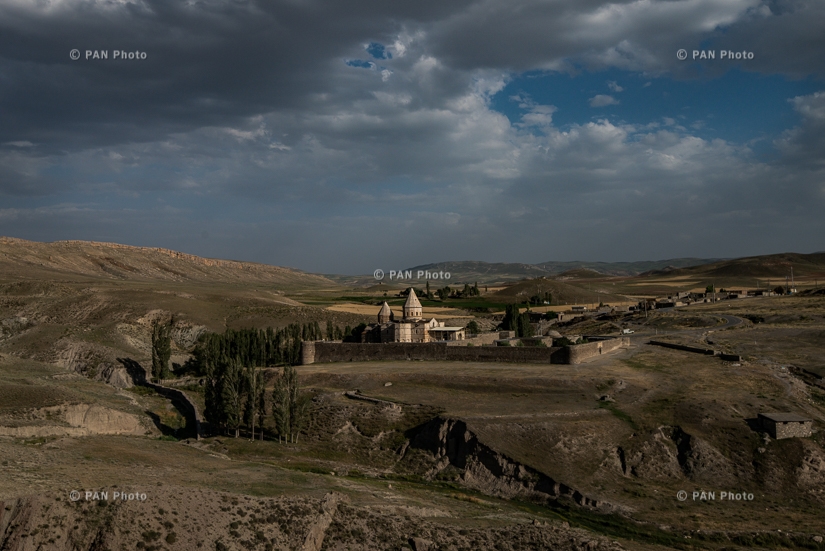
The panorama of Monastery of Saint Thaddeus
© PAN Photo / Karo Sahakyan
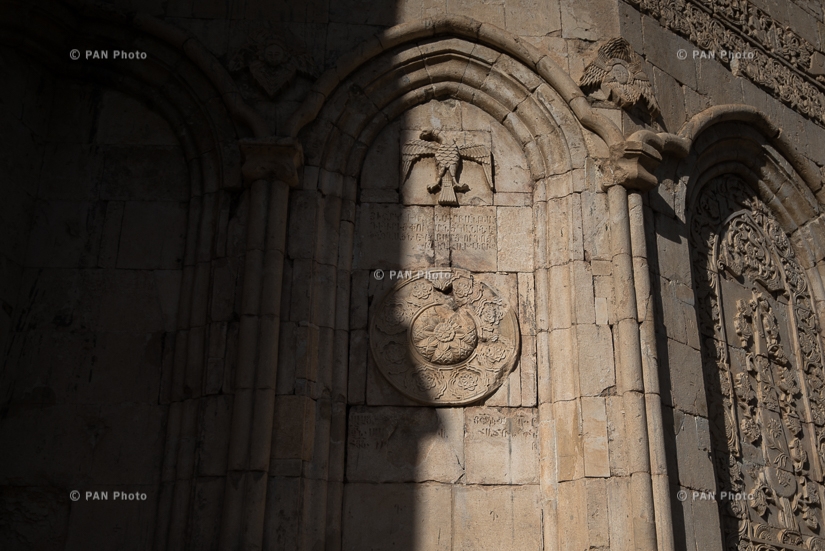
High relief featuring an emblem, Monastery of Saint Thaddeus, 7th century, rebuilt in 1814, Northern Iran (historic province of Artaz, Vaspurakan)
© PAN Photo / Karo Sahakyan
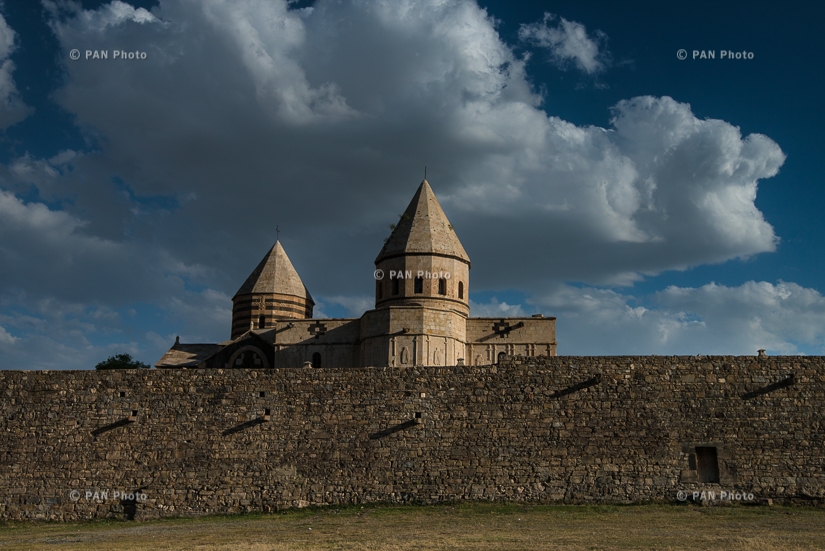
Monastery of Saint Thaddeus, 7th century, rebuilt in 1814, Northern Iran (historic province of Artaz, Vaspurakan)
© PAN Photo / Karo Sahakyan
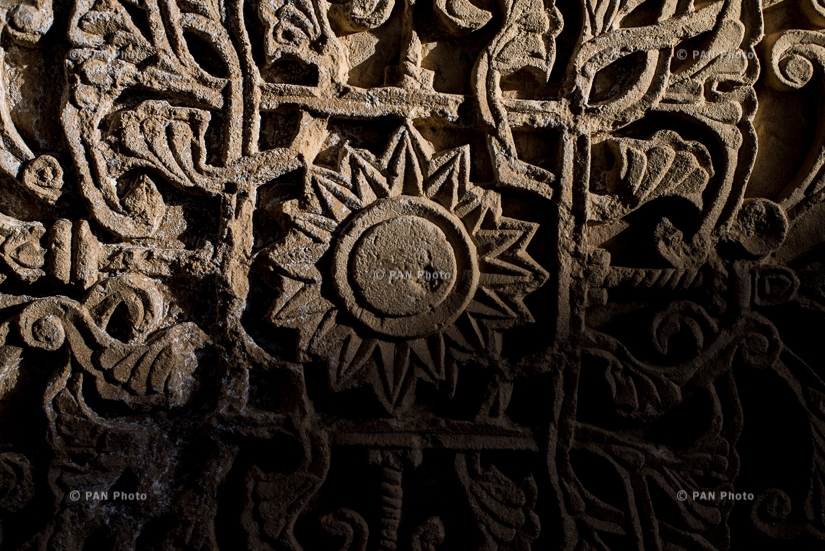
Figurative relief in the form of the sun disc, Monastery of Saint Thaddeus, 7th century, rebuilt in 1814, Northern Iran (historic province of Artaz, Vaspurakan)
© PAN Photo / Karo Sahakyan
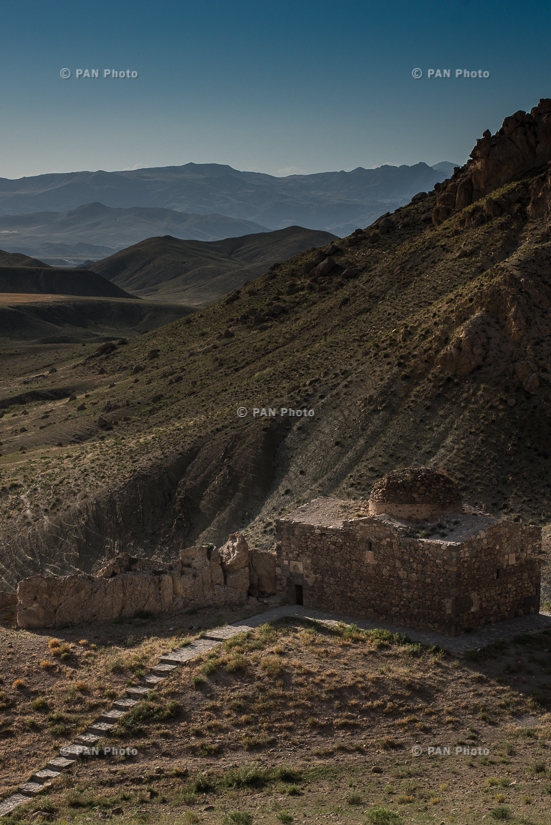
Chapel, Monastery of Saint Thaddeus, 7th century, rebuilt in 1814, Northern Iran (historic province of Artaz, Vaspurakan)
© PAN Photo / Karo Sahakyan
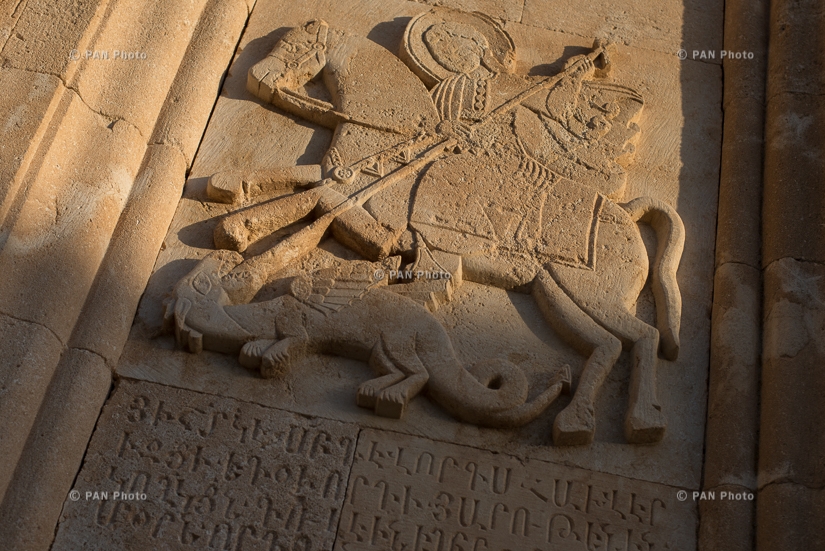
High relief, Monastery of Saint Thaddeus, 7th century, rebuilt in 1814, Northern Iran (historic province of Artaz, Vaspurakan)
© PAN Photo / Karo Sahakyan
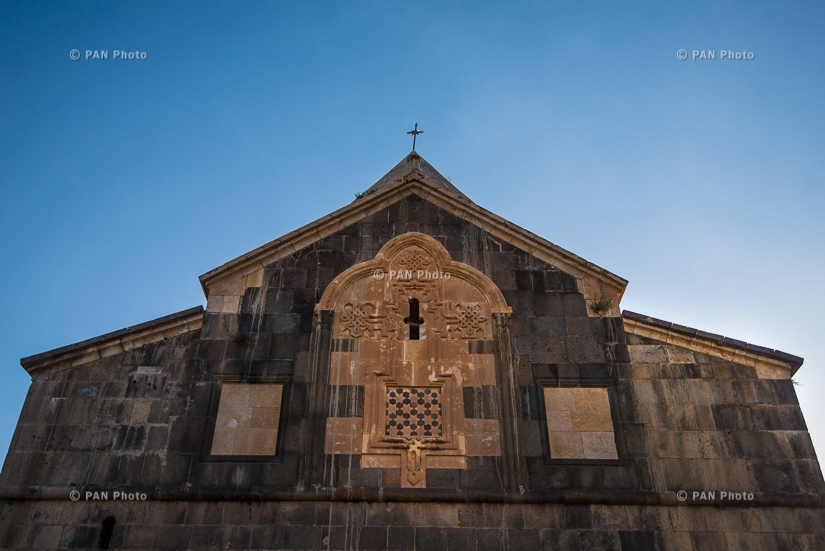
Monastery of Saint Thaddeus, eastern facade of the old church
© PAN Photo / Karo Sahakyan
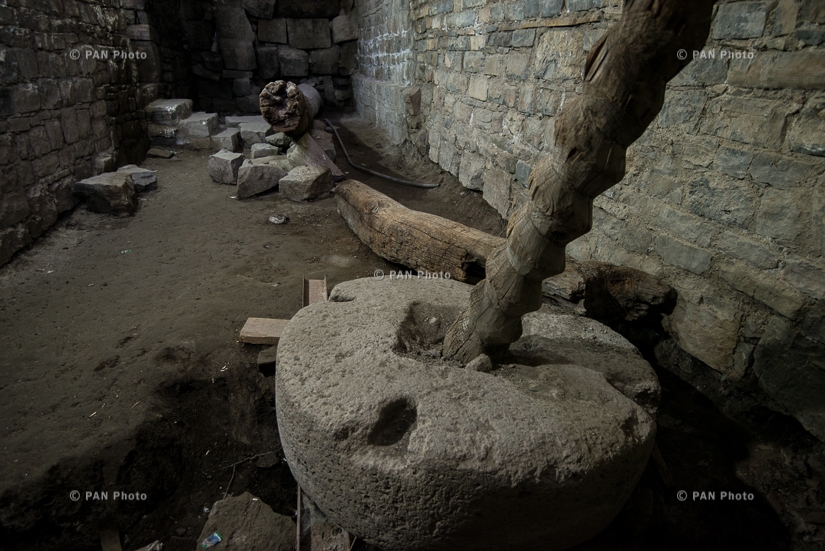
Remains of a wine press, Monastery of Saint Thaddeus, 7th century, rebuilt in 1814, Northern Iran (historic province of Artaz, Vaspurakan)
© PAN Photo / Karo Sahakyan
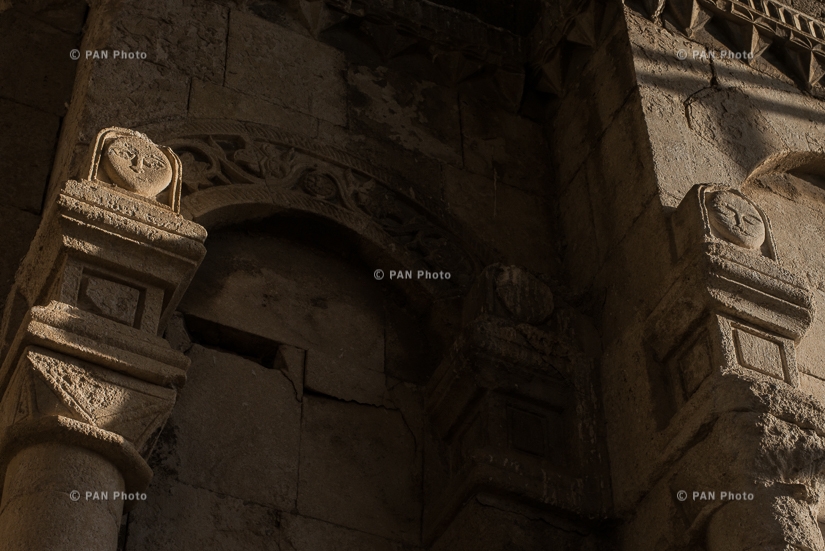
High reliefs, Monastery of Saint Thaddeus, 7th century, rebuilt in 1814, Northern Iran (historic province of Artaz, Vaspurakan)
© PAN Photo / Karo Sahakyan
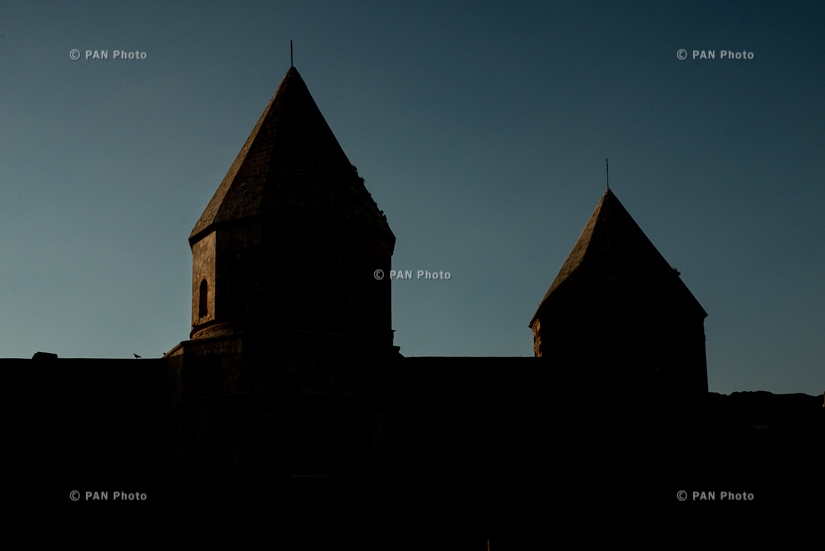
Monastery of Saint Thaddeus, 7th century, rebuilt in 1814, Northern Iran (historic province of Artaz, Vaspurakan)
© PAN Photo / Karo Sahakyan
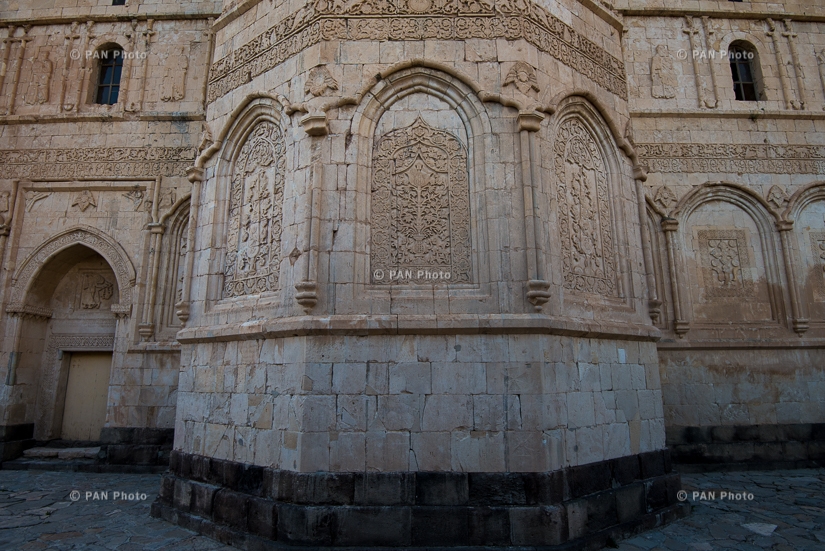
Monastery of Saint Thaddeus, figurative reliefs of the new church (early 19th century)
© PAN Photo / Karo Sahakyan
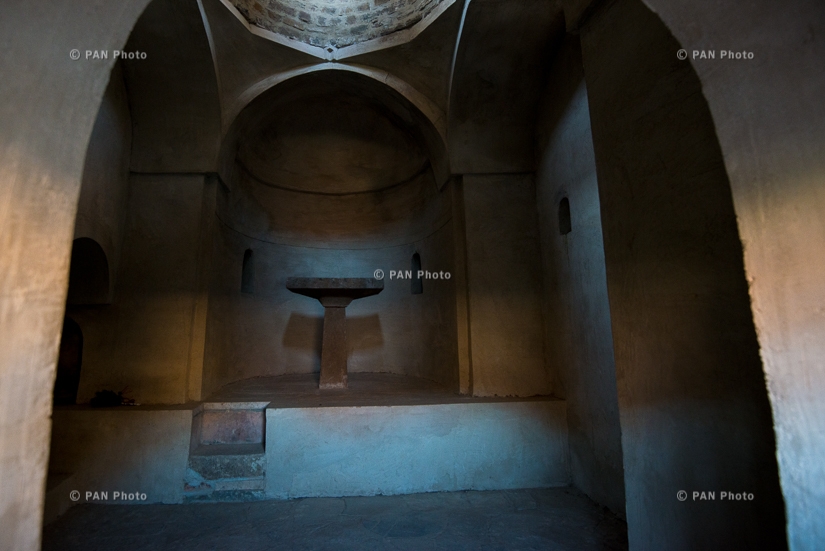
The Shepherd Church, Old Julfa, 16th century, renovated in the 19th century and 2014
© PAN Photo / Karo Sahakyan
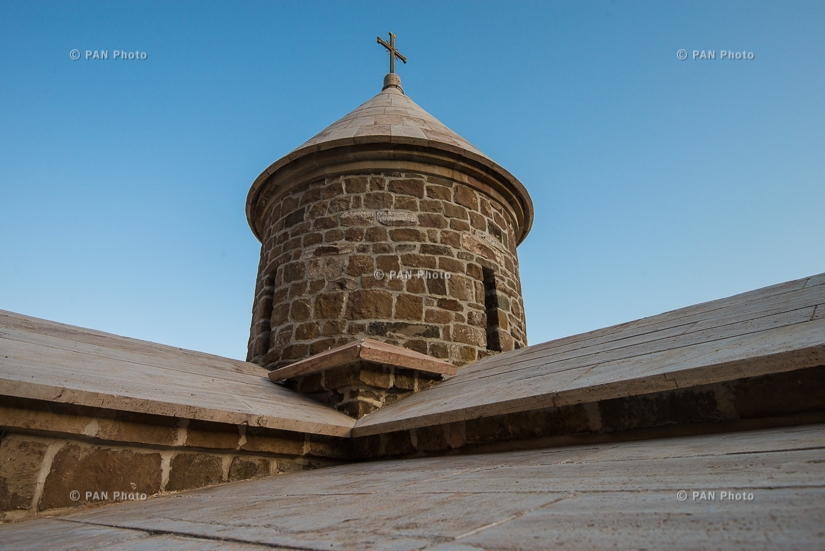
The Shepherd Church, Old Julfa, 16th century, renovated in the 19th century and 2014
© PAN Photo / Karo Sahakyan
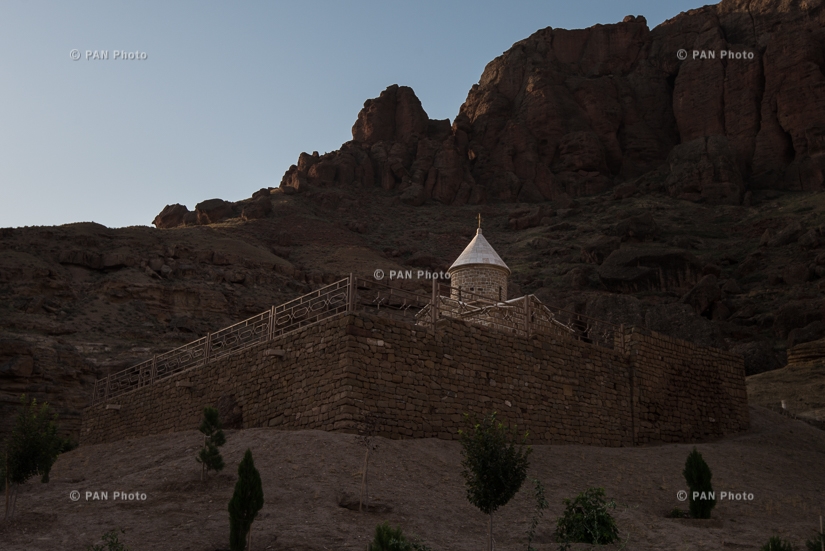
The Shepherd Church, Old Julfa, 16th century,renovated in the 19th century and 2014
© PAN Photo / Karo Sahakyan
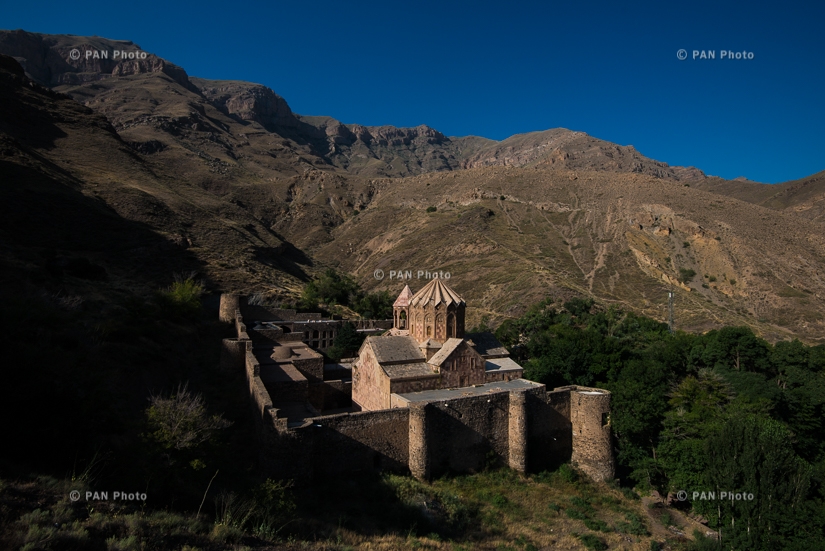
Monastery of St. Stephen the Protomartyr, (Maghardavank), 7-10th centuries
© PAN Photo / Karo Sahakyan
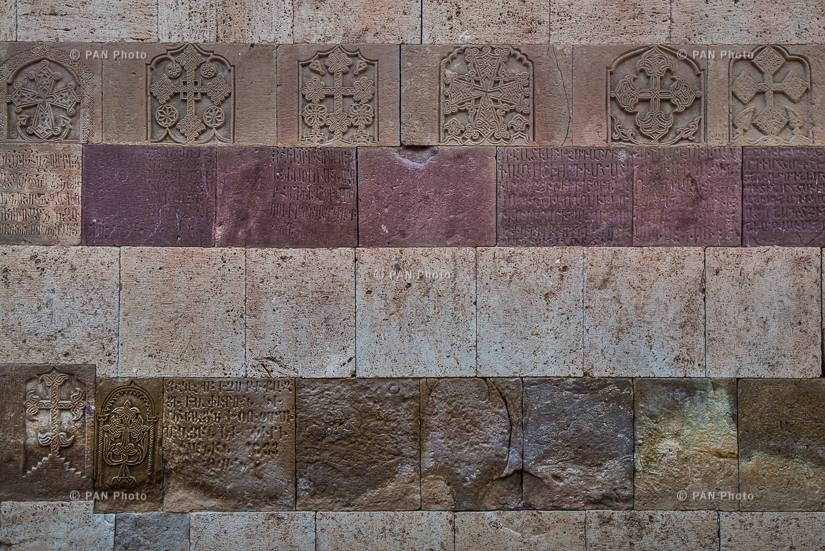
Khachkars and high reliefs, Monastery of St. Stephen the Protomartyr (Maghardavank), 7-10th centuries
© PAN Photo / Karo Sahakyan
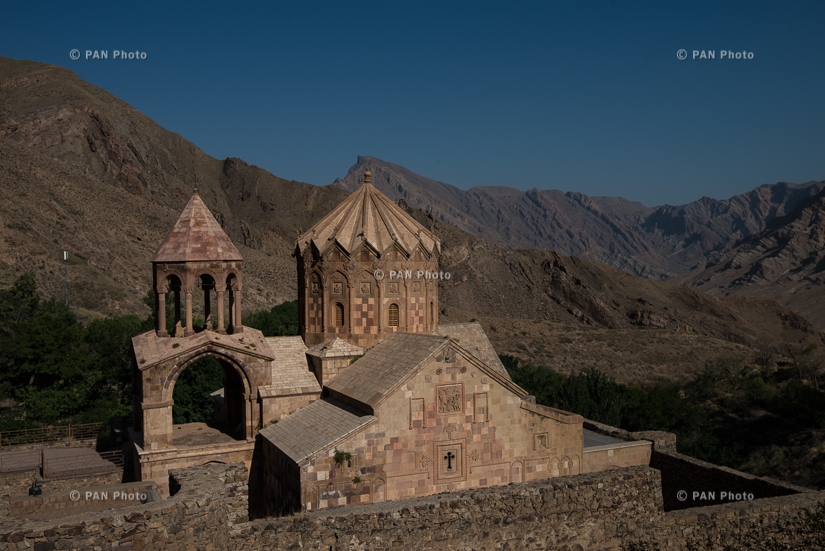
Monastery of St. Stephen the Protomartyr, (Maghardavank), 7-10th centuries
© PAN Photo / Karo Sahakyan

Belfry, Monastery of St. Stephen the Protomartyr, (Maghardavank), 7-10th centuries
© PAN Photo / Karo Sahakyan
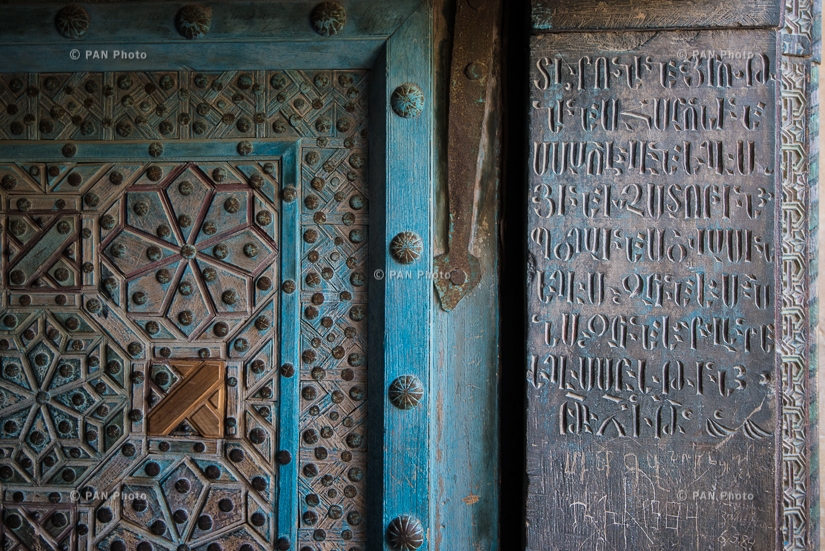
The curved wooden door of the Monastery of St. Stephen the Protomartyr (7-10th centuries)
© PAN Photo / Karo Sahakyan
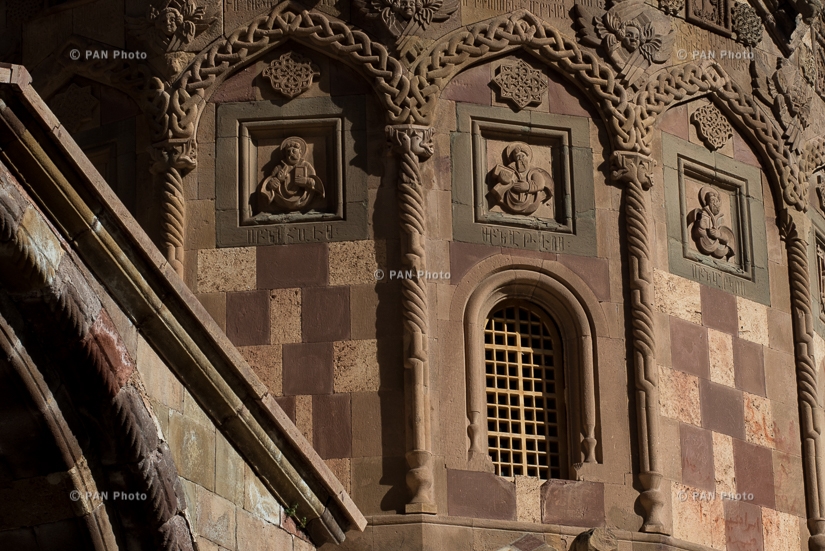
Figurative reliefs of 12 Apostles on the drum of Monastery of St. Stephen the Protomartyr, (Maghardavank), 7-10th centuries
© PAN Photo / Karo Sahakyan
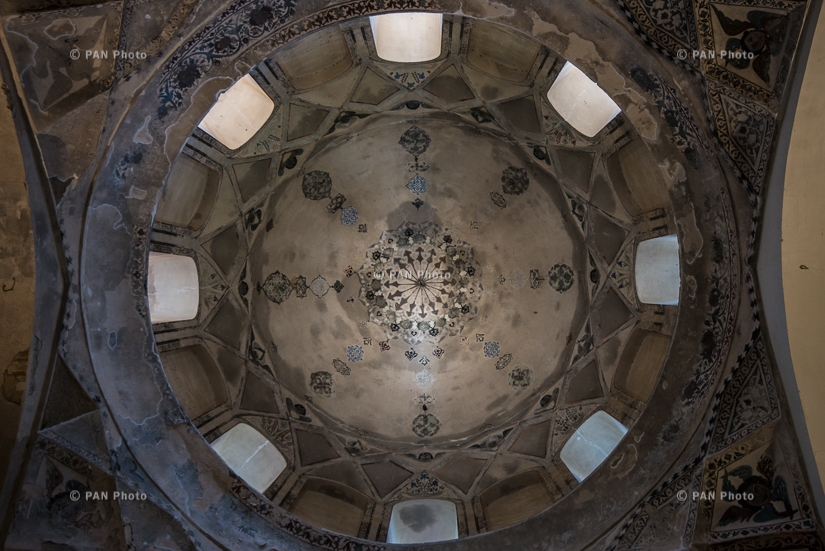
The dome of the Monastery of St. Stephen the Protomartyr (7-10th centuries)
© PAN Photo / Karo Sahakyan
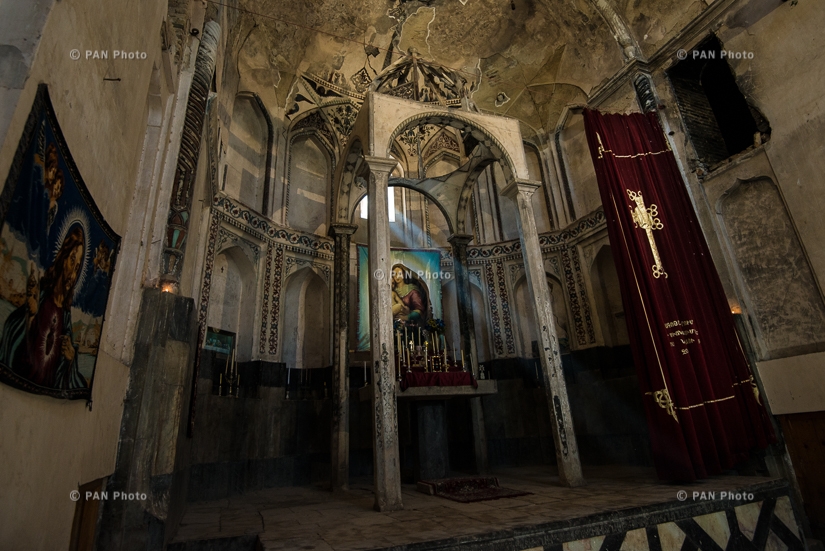
The altar of the Monastery of St. Stephen the Protomartyr (7-10th centuries)
© PAN Photo / Karo Sahakyan
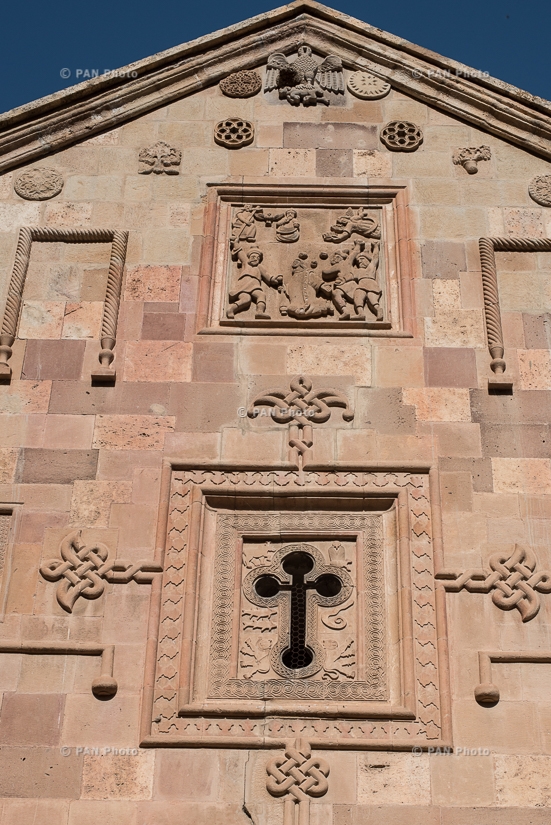
The high relief “The Stoning of Stephen the Martyr” on the eastern facade of the Monastery of St. Stephen the Protomartyr (7-10th centuries)
© PAN Photo / Karo Sahakyan
PAN Photo Agency works with:
